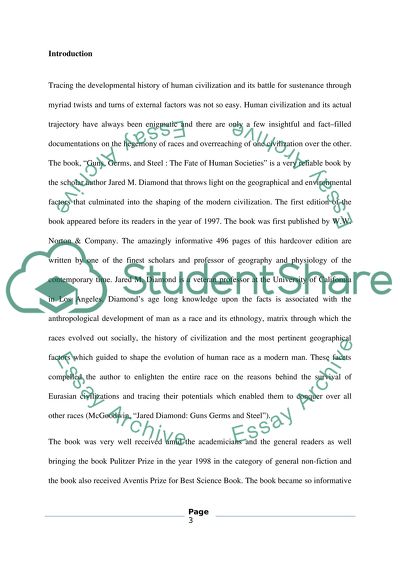Cite this document
(“Guns, Germs, and Steel: The Fate of Human Societies Book Report/Review”, n.d.)
Retrieved from https://studentshare.org/anthropology/1473932-guns-germs-and-steel-by-jared-diamond
Retrieved from https://studentshare.org/anthropology/1473932-guns-germs-and-steel-by-jared-diamond
(Guns, Germs, and Steel: The Fate of Human Societies Book Report/Review)
https://studentshare.org/anthropology/1473932-guns-germs-and-steel-by-jared-diamond.
https://studentshare.org/anthropology/1473932-guns-germs-and-steel-by-jared-diamond.
“Guns, Germs, and Steel: The Fate of Human Societies Book Report/Review”, n.d. https://studentshare.org/anthropology/1473932-guns-germs-and-steel-by-jared-diamond.


